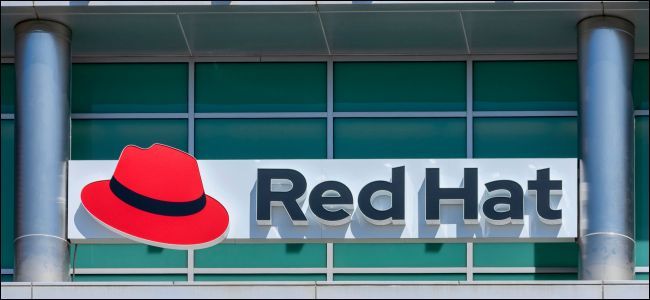Author: DAVE
Translator: Nuclear Cola
Editor: Liu Yan
Commercial Unix sales are plummeting—this trend must be influenced by certain underlying factors. All the scenarios that once popularized Unix have now become the domain of Linux, which has also reached new heights that Unix could never achieve. Has Linux developed into a perfect and reliable alternative, beginning to encroach upon the survival space of its “predecessor”? Can Unix make a comeback?
Unix’s Rise
The first version of Unix was born 50 years ago, in 1969, at Bell Labs, which was then part of AT&T. Happy 50th birthday, Unix! In fact, its original name was Unics, which stood for UNIplexed Information and Computing Service. At some point, “cs” became “x”. In any case, the first Unix was written in DEC assembly language for the DEC PDP/7 computer.

Unix was developed by Bell to manage the typesetting of internal patent applications. The Unix development team believed that upgrading to the more powerful DEC PDP/11/20 computer would create a wave of change, so they specifically created this typesetting program to quickly generate patent applications. After that, Bell began to use Unix on a large scale and released Unix Version 4, rewritten in C language, in 1973. In the introduction of the accompanying manual, the team stated, “The number of Unix installations has now exceeded 20, and is expected to grow further in the future.” (Excerpt from the Unix Programmer’s Manual by K. Thompson and D.M. Ritchie, November 1973, Fourth Edition.)
They were too conservative! In 1973, after Ken Thompson and Dennis Ritchie, the core architects of Unix, presented a paper at a Unix conference, they immediately received a large number of requests for copies of the operating system.
Due to an agreement made by AT&T with the U.S. government in 1956, AT&T was prohibited from engaging in any business other than “ordinary carrier communication services.” As a result, while they could obtain product licenses from Bell Labs, they could not focus on developing it into a commercial business. Therefore, the Unix operating system was distributed in the form of source code with a license, with costs only covering transportation, packaging, and “reasonable patent usage fees.”
Since AT&T could not treat Unix as a commercial product and did not promote it, Unix did not generate any marketing revenue. At that time, Unix had no technical support or bug-fixing services. Nevertheless, it made its way into universities, military institutions, and eventually the commercial market—it’s quite miraculous.
Because Unix was rewritten in C, users could relatively easily port it to new computer architectures, allowing Unix to run on various hardware. As a result, Unix broke free from the limitations of DEC product platforms and could work smoothly on almost any device.
The Rise of Commercial Unix
In 1982, under another agreement, AT&T was forced to relinquish control of Bell Labs and split it into several smaller regional companies. However, this upheaval also allowed AT&T to break free from previous limitations and officially launch Unix products. In 1983, AT&T raised licensing fees and eventually established a technical support and maintenance service system.
This attempt at commercialization prompted Richard Stallman to establish the GNU project, aimed at writing a version of Unix that did not use AT&T source code. Happy 36th birthday to the GNU project!
Of course, original Unix users could continue to use AT&T’s source code under the licensing agreement. But this also meant that users had to modify and extend the code themselves, write patches, and rely on themselves or the Unix user community without AT&T support.
During this period, IBM, HP, Sun, Silicon Graphics, and many other hardware suppliers created their own proprietary commercial Unix or Unix-like operating systems.
Unix gradually became the preferred operating system for mission-critical workloads in markets such as healthcare and banking. Unix began to assist mainframes and microcomputers in the hands of aerospace, automotive, and shipbuilding manufacturers, contributing its power to universities worldwide.
With attempts to port to personal computers, combined with the powerful performance of the Intel 80386 processor released in 1985, the number of Unix installations surged. Now, anyone could easily use Unix on mainframes, minicomputers, and personal computers by paying for it.
The Unix Wars
From the late 1980s to the early 1990s, a long and chaotic struggle erupted over control of various Unix market segments and the dominance of standardization. Clearly, all participants wanted to become the gold standard. Eventually, a standard emerged to address the serious compatibility issues caused by the chaos.
At this time, the Single UNIX Specification (including the POSIX standard) emerged. Today, the uppercase version of “UNIX” has become a registered trademark of the Open Group, allowing only operating systems that comply with the Single UNIX Specification to use it. In summary, “UNIX” is a trademark, while “Unix” represents a type of operating system, some of which qualify to be called “UNIX.”
This historical summary is indeed very brief; in reality, potential Unix users at that time faced a level of confusion and chaos far beyond what we can imagine today. Clearly, customers at that time had no idea who to trust—during this wait-and-see period, Unix sales began to slow significantly.
This was a self-destructive path for Unix’s commercialization, but the real fatal blow came from the outside.
Happy Birthday, Linux
By August 2019, Linux had celebrated 28 years of growth—once again, happy birthday, Linux. In 1991, Finnish computer science student Linus Torvalds released a famous statement indicating that he was working on developing an operating system kernel. The motivation was simple: he wanted to learn about the design architecture of the 386 CPU.
At that time, Richard Stallman’s GNU project had already completed writing many elements of Unix operating systems, but its kernel, GNU Hurd, was not yet ready, not even for an initial release. Linus Torvalds’s Linux kernel filled this gap. With the Linux kernel and GNU operating system tools and utilities, a fully operational Unix-like operating system was born. Purists call it GNU/Linux, while those of us who are less pedantic simply refer to it as “Linux.” We fully appreciate, respect, and recognize the contributions of both camps and celebrate the results they have brought.
Since 1991, Linux has steadily improved in functionality, completeness, and stability, and it is now widely present in an astonishing number of different use cases and products.
The earliest distribution still being updated is Slackware, released in 1993, based on the Softlanding Linux System version released the previous year. Slackware aims to be the version of Linux that is closest to Unix among many distributions. We are pleased to see this project still thriving, with a healthy technical community and dedicated maintenance team.

Slackware Linux continues to thrive as of 2019
The Path of Linux’s Ascendancy
It has been proven that free Unix-like operating systems have immense appeal, and the ability to access and modify source code is highly praised. Today, Linux is everywhere.
-
It runs the entire Web. W3Techs reports that among the top 10 million Alexa-retrieved domains, 70% use Linux.
-
It powers public cloud systems. In Amazon EC2, Linux constitutes up to 92% of the server ratio, with over 350,000 independent instances.
-
It runs the world’s fastest supercomputers. All of the top 500 supercomputers globally run Linux.
-
It reaches into space. The flight computer of the Falcon 9 rocket uses the Linux system.
-
It’s in your pocket. Google’s Android uses the Linux kernel. Currently, there are over 2.5 billion active Android devices, including Chromebooks and other devices. (In fact, Apple’s iOS kernel comes from a Unix variant code developed by the University of California, Berkeley, known as Berkeley Software Distribution, or BSD. Therefore, whether you choose an iOS or Android smartphone, you cannot escape the direct influence of this Unix-like operating system.)
-
It supports your smart home system. Do you have smart devices installed at home? Almost certainly, they run embedded Linux.
-
It powers networking systems. Most managed switches, wireless access points, and routers run embedded Linux systems.
-
It supports telecommunications services. Whether it’s a VoIP phone on your desk or a telephone switch in a communications room, there’s a high probability it runs embedded Linux.
-
It runs inside your computer. Even if you don’t directly use a Linux desktop, Microsoft has introduced the Linux kernel in the Windows Subsystem for Linux 2.0 version of Windows 10.
-
It runs in your car. Tesla (and other major automakers) uses Linux in their vehicles.
In fact, Linux dominates all computing platforms except for PC desktops. Even Microsoft itself, starting from desktop systems, hopes to enter the Linux world with the Windows Subsystem for Linux.
However, the focus of this discussion is on Unix and Linux, not Linux and Windows. Most importantly, all the scenarios that once popularized Unix have now become the domain of Linux. Moreover, Linux has reached new heights that Unix could never achieve. Take smart TVs as an example; Linux is the sole leader.
IBM can be said to be the last defender of the commercial Unix world, with its AIX product being the most direct evidence. However, even so, the blue giant is also actively embracing the Linux market, valued at $34 billion (this $34 billion is just for commercial Linux, namely Red Hat Linux). In fact, the blue giant even competes with Linux. Among the top 500 supercomputers globally, the fastest system comes from IBM, but it runs Red Hat Enterprise Linux, not the blue giant’s own AIX.
Is Linux Really Stronger Than Unix?
No, the two are actually quite similar; Linux can run on supercomputers and also scale down to almost any computing device, such as the Raspberry Pi. Additionally, we can access the Linux source code and enjoy the enthusiastic technical community supported by numerous users and maintainers. Most importantly, Linux systems can be obtained for free.
If commercial support is needed, one can also choose corresponding system solutions from Red Hat, Canonical, and Oracle. This is a significant reason why Linux can replace Unix in certain enterprise applications, as many companies inherently distrust free technology products. They are willing to pay for the assurance and reliability that comes with it. The rise of Linux is not solely due to being free; more accurately, commercial Linux has defeated commercial Unix.
So, is Linux more successful than Unix? Well, it depends on how success is defined. If measured by the breadth of operating system applications, then it can indeed be said to be more successful. If viewed from the perspective of the number of devices running the operating system, the answer is also affirmative.
But there remains one question I cannot answer at this moment: does Red Hat’s $34 billion market value exceed the total revenue from all Unix commercial licenses and operational cycles from Sun, HP, and Silicon Graphics combined? I’m not sure, but it’s a possibility.
Did Linux Cut Off Unix’s Lifeline?
Yes, Linux has indeed cut off Unix’s lifeline.Or more precisely, Linux has severed Unix’s path to survival and turned it into its own.
Unix still exists, running mission-critical systems with extremely stable performance. This will continue until its corresponding applications, operating systems, or hardware platforms completely disappear. But there is a saying in the tech industry that essentially means as long as it works, keep using it. Therefore, I guess there will always be someone secretly using their commercial UNIX or Unix-like operating system in some corner.
But can the existing audience scale be further expanded? Considering that Linux has developed such a rich variety of distributions, I believe the possibility of Unix making a comeback is very slim.
Original link:
https://www.howtogeek.com/440147/did-linux-kill-commercial-unix/

Click to see fewer bugs👇